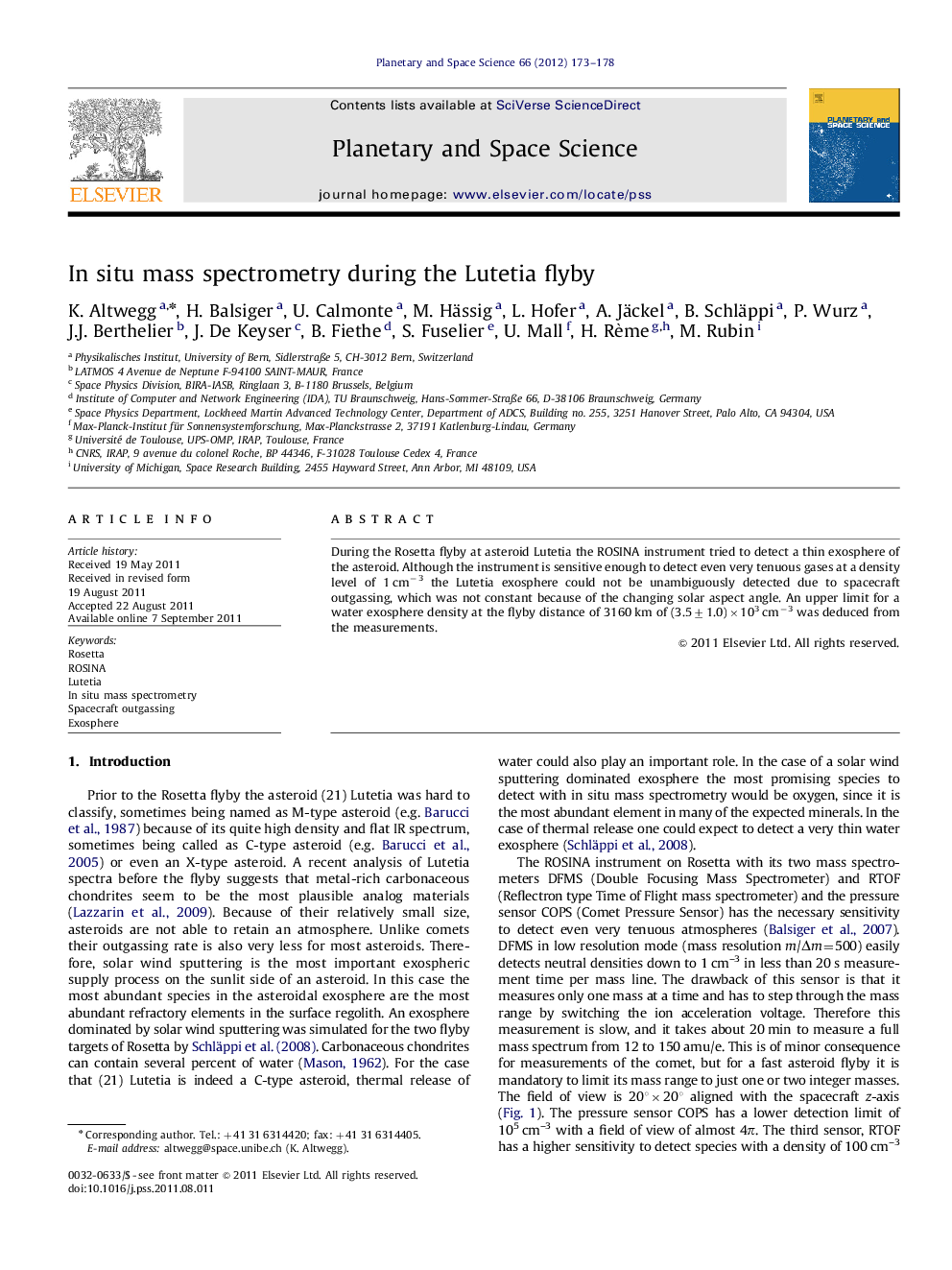| Article ID | Journal | Published Year | Pages | File Type |
|---|---|---|---|---|
| 1781493 | Planetary and Space Science | 2012 | 6 Pages |
Abstract
During the Rosetta flyby at asteroid Lutetia the ROSINA instrument tried to detect a thin exosphere of the asteroid. Although the instrument is sensitive enough to detect even very tenuous gases at a density level of 1 cm−3 the Lutetia exosphere could not be unambiguously detected due to spacecraft outgassing, which was not constant because of the changing solar aspect angle. An upper limit for a water exosphere density at the flyby distance of 3160 km of (3.5±1.0)×103 cm−3 was deduced from the measurements.
► ROSINA measured mass spectra all through the Lutetia flyby. ► Signal is dominated by spacecraft outgassing. ► An upper limit for a water exosphere density at the flyby distance of 3160 km of (3.5±1.0)×103 cm−3 was deduced.
Related Topics
Physical Sciences and Engineering
Earth and Planetary Sciences
Geophysics
Authors
K. Altwegg, H. Balsiger, U. Calmonte, M. Hässig, L. Hofer, A. Jäckel, B. Schläppi, P. Wurz, J.J. Berthelier, J. De Keyser, B. Fiethe, S. Fuselier, U. Mall, H. Rème, M. Rubin,
